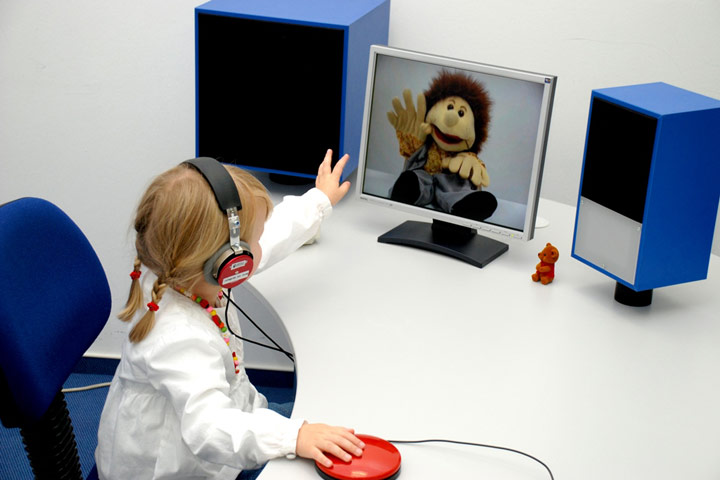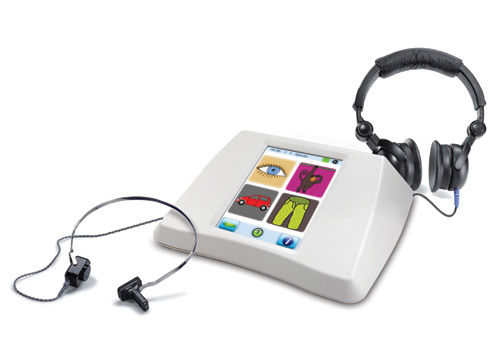Understanding Visual Reinforcement Audiometry
Introduction
Understanding Visual Reinforcement Audiometry: A Comprehensive Guide
Hearing loss is a common issue that affects people of all ages. It can be particularly challenging to diagnose in young children, who may not be able to communicate their hearing difficulties effectively. That’s where Visual Reinforcement Audiometry (VRA) comes in. VRA is a diagnostic tool used to assess hearing in young children who cannot cooperate with traditional hearing tests.

VRA involves using visual stimuli to reinforce the child’s response to auditory stimuli. The test is conducted in a sound booth, and the child is seated on their parent’s lap or in a high chair. A trained audiologist or hearing specialist presents sounds at different frequencies and volumes through speakers in the sound booth. When the child responds to the sound, a visual reward, such as an animated toy or puppet, is activated to reinforce their response.
How Visual Reinforcement Audiometry Works
Visual Reinforcement Audiometry works by using visual stimuli to reinforce the child’s response to auditory stimuli. The test begins with the child being conditioned to associate a visual reward with a specific sound frequency and volume. This conditioning process involves presenting the sound and then activating the visual reward, such as an animated toy or puppet, immediately afterward. This process is repeated until the child consistently turns their head or eyes towards the visual reward in response to the sound.

Once the conditioning process is complete, the actual testing begins. The audiologist presents sounds at different frequencies and volumes, and the child’s response to each sound is reinforced with the visual reward. The child’s responses are recorded and used to determine their hearing threshold, which is the lowest sound level at which they can consistently respond to the sound.
Benefits of Visual Reinforcement Audiometry
Visual Reinforcement Audiometry offers several benefits over traditional hearing tests, particularly for young children. Some of these benefits include:
Non-invasive: VRA is a non-invasive test that does not require any physical contact with the child.
Objective results: The visual reinforcement aspect of the test helps ensure that the child's response to the sound is genuine, which can lead to more accurate test results.
Quick results: VRA typically produces quick results, allowing for timely intervention if necessary.
Engaging for children: The visual rewards used in VRA are engaging for children and can help keep them focused and motivated during the testing process.
What to Expect During the Visual Reinforcement Audiometry Test
If your child is scheduled for a Visual Reinforcement Audiometry test, here’s what you can expect:
The test will be conducted in a sound booth, which is a small, soundproof room designed for hearing tests.
Your child will be seated on your lap or in a highchair, and you will be asked to remain quiet during the test.
The audiologist will present sounds at different frequencies and volumes through speakers in the sound booth.
The audiologist will present sounds at different frequencies and volumes through speakers in the sound booth.
The test may take anywhere from 10 to 30 minutes to complete, depending on the child's age and ability to cooperate.
After the test is complete, the audiologist will review the results with you and discuss any necessary follow-up steps.
FAQs
A: Visual Reinforcement Audiometry is typically used for children between the ages of 6 months and 2 years, although it can be used for Visual Reinforcement Audiometry is typically used for children between the ages of 6 months and 2 years, although it can be used for
A: Yes, Visual Reinforcement Audiometry is a safe and non-invasive test that does not pose any risks to the child.
A: It's a good idea to explain to your child what will happen during the test in simple terms that they can understand. You can also bring a favorite toy or snack to help keep them calm and comfortable during the testing process.
A: If your child does not respond to the sounds during the test, the audiologist may try presenting the sounds at a higher volume or frequency to see if they can elicit a response. If necessary, the test may be rescheduled for another time.
